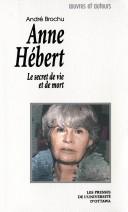| Listing 1 - 2 of 2 |
Sort by
|
Book
Abstract | Keywords | Export | Availability | Bookmark
 Loading...
Loading...Choose an application
- Reference Manager
- EndNote
- RefWorks (Direct export to RefWorks)
Reflecting upon his experience making his 2010 feature film Mothers, a cinematic triptych interweaving three narratives that are each, in their own way, about the often tenuous lines between truth and fiction, and one of which actually morphs into a documentary about the aftermath in a small Macedonian town where three retired cleaning women were found raped and killed in 2008 and the murderer turned out to be the journalist covering the story for a major Macedonian newspaper, the Oscar-nominated Macedonian-born and New York-based writer-director Milcho Manchevski writes that, "Most of us look at films differently or accept stories in a different way if we believe that they are true. We watch a documentary film in a different way from the way we watch a drama. We read a magazine article in a different way from the way in which we read a short story. Sometimes, we even treat a film that employs actors differently than a regular drama because we were told that it is based on something that really happened. We treat these works based on truth or reporting on the truth in different ways. Why? What is it in our relation to reality or in our relation to what we perceive to be reality that makes us value a work of artifice (an art piece) differently depending on our knowledge or conviction of whether that work of artifice is based on events that really took place?" In this extended essay, or letter, Manchevski ruminates the different ways in which both filmmakers and audiences create, experience, and absorb the cinematic narrative with a certain trust and faith in the artwork to render, not the factual truth, per se, but the importantly shared experience of trusting "the plane of reality created by the work itself," such that "we trust its inner logic and integrity, we have faith in what happens while we give ourselves to this work of art." Truth becomes a question of what artist and audience can see and feel together: what feels real becomes the world we inhabit. The book also includes an Afterword, "Truth Approaches, Reality Affects," by internationally renowned film scholar Adrian Martin.
Motion pictures --- Motion picture audiences. --- Production and direction. --- Philosophy. --- aesthetics --- Macedonia --- film studies --- cinema vérité

ISBN: 2760315363 2760326896 2760305120 9782760315365 9782760326897 Year: 2000 Publisher: Les Presses de l’Université d’Ottawa | University of Ottawa Press
Abstract | Keywords | Export | Availability | Bookmark
 Loading...
Loading...Choose an application
- Reference Manager
- EndNote
- RefWorks (Direct export to RefWorks)
Très rapidement, Anne Hébert trouve sa voie, singulière entre toutes celles de notre littérature : le matérialisme. Entendons par là que, récusant l'enseignement religieux, c'est dans les profondeurs du moi que l'auteure cherche la vérité de l'être ; et la plongée en soi révèle essentiellement, comme le disait Freud, le jeu des pulsions. Pulsions de vie et de mort. Toute l'oeuvre est un quête du secret logé dans le coeur charnel, une quête du désir et des risques mortels qu'il fait courir à celui ou celle (François, Catherine, Elisabeth, Julie, Héloïse, Stevens...) qui s'abîme en lui. Cette
Canadian fiction -- Women authors -- History and criticism. --- French-Canadian fiction -- Women authors -- History and criticism. --- Women and literature -- Canada. --- Romance Literatures --- Languages & Literatures --- French Literature --- Pulsions dans la littérature. --- Pulsion de mort dans la littérature. --- Impulse in literature. --- Death instinct in literature. --- Hébert, Anne, --- Critique et interprétation. --- Criticism and interpretation. --- Pulsion de mort dans la litterature. --- Pulsions dans la litterature. --- Hebert, Anne, --- Critique et interpretation. --- Hébert, Anne --- vie --- matérialisme --- discours critique --- mort --- littérature --- vérité
| Listing 1 - 2 of 2 |
Sort by
|

 Search
Search Feedback
Feedback About UniCat
About UniCat  Help
Help News
News